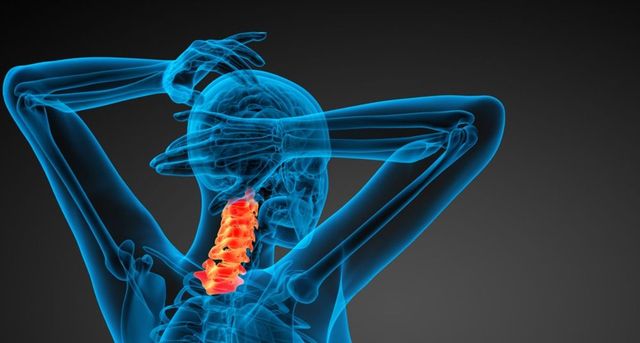The Difference Between a Top Chiropractor and a Standard Chiropractic Practitioner
Wiki Article
Discovering Spinal Decompression Methods: What You Required to Know for Better Spine Care
Spinal decompression strategies are important for people experiencing chronic back discomfort or spinal issues. These methods vary from non-invasive therapies to surgical choices, each made to ease stress on the spine. Comprehending these strategies is very important for effective spinal column treatment. Not all strategies are suitable for every condition. The subtleties behind each approach warrant closer exam, as they can greatly influence healing and total health end results. What aspects should one consider before making a choice?Recognizing Spinal Decompression
Although spinal decompression may sound complicated, it basically describes a range of strategies focused on easing pressure on the spinal cord and surrounding nerves. Chiropractor. The back is a crucial structure that sustains the body and protects necessary neurological pathways. When compression occurs, it can lead to pain, pain, and reduced wheelchair. Recognizing spinal decompression includes acknowledging the causes of this pressure, such as herniated discs, spinal stenosis, or injury. By addressing these underlying concerns, decompression strategies seek to bring back proper alignment and feature. This procedure can include both surgical and non-surgical techniques, customized to individual patient needs. The goal is to boost the top quality of life by soothing discomfort, improving position, and promoting much better motion. As awareness of spinal wellness grows, the importance of recognizing spinal decompression becomes increasingly pertinent for those looking for efficient treatment alternativesCommon Spinal Decompression Techniques
Spinal decompression strategies incorporate a variety of methods made to eliminate stress on the spinal column and its associated frameworks. These techniques can be generally classified into medical and non-surgical techniques. Non-surgical methods consist of spinal grip, where gentle drawing pressures are applied to the back, producing room between vertebrae. This can relieve nerve compression and advertise recovery. Chiropractic changes additionally fall under this classification, concentrating on realigning the spinal column to boost function.Surgical decompression methods involve procedures such as laminectomy, where a part of the vertebra is gotten rid of to ease stress on the spinal cord or nerves. Discectomy, one more medical option, involves the elimination of herniated disc product. In addition, minimally invasive methods, like endoscopic discectomy, are obtaining popularity because of their minimized recovery times. Each method offers a particular purpose and might be picked based on individual patient requirements and the extent of their spinal condition.
Benefits of Spinal Decompression
When considering the various approaches to handling spinal problems, the advantages of spinal decompression strategies come to be noticeable. These methods aim to eliminate stress on the spinal discs and nerves, which can alleviate pain and enhance overall spinal health. By creating space in between vertebrae, decompression promotes enhanced blood circulation and nutrient flow to the affected areas, assisting in healing and healing.Furthermore, spinal decompression can assist bring back the all-natural positioning of the spinal column, potentially decreasing the risk of future injuries. Patients frequently report enhanced wheelchair and adaptability list below treatment, resulting in an improved quality of life. The reduction in pressure can lessen signs associated with problems such as herniated discs, sciatica, and spinal stenosis, supplying a non-invasive option to more intrusive treatments. In general, spinal decompression techniques offer a variety of physical and restorative benefits, making them a beneficial component of considerable spinal column care.

That Can Take Advantage Of Spinal Decompression?
Individuals struggling with chronic back discomfort, herniated discs, or spinal constriction may locate substantial relief via spinal decompression techniques. This non-invasive therapy can be specifically beneficial for those experiencing nerve compression signs, such as prickling, pins and needles, or weakness in the arm or legs. Professional athletes recuperating from injuries or people with degenerative disc condition may additionally take into consideration spinal decompression as a sensible alternative for pain monitoring and enhanced wheelchair.In addition, candidates for spinal decompression usually include those that have actually not responded well to typical treatments, such as drugs or physical treatment. It can likewise offer as a choice for patients seeking to prevent surgical treatment. Generally, spinal decompression strategies can offer a restorative alternative for numerous individuals facing spinal problems, assisting them gain back a greater quality of life and functional ability. Consulting a health care expert is necessary to establish the viability of this therapy for certain conditions.
Factors to consider and Preventative Measures for Spinal Decompression

The sort of spinal decompression technique-- whether non-surgical or surgical-- must straighten with the person's particular problem and overall wellness status. Surveillance during the treatment is important to resolve any type of adverse reactions promptly. Individuals must likewise understand that spinal decompression is not a one-size-fits-all option; a comprehensive therapy plan might consist of physical therapy or lifestyle modifications to sustain healing. Overall, adhering to these precautions can considerably boost the efficacy of spinal decompression treatments and advertise perfect spinal column wellness.

Frequently Asked Concerns
How much time Does a Common Spinal Decompression Session Last?
A regular spinal decompression session lasts in between 30 to 45 minutes. This duration enables ideal treatment while making sure the person remains comfortable and gets appropriate focus to their specific spinal issues and needs.Can Spinal Decompression Be Done in your home?
Spinal decompression can be executed at home via specific workouts and devices, such as inversion tables or lumbar dental braces. However, assessment with a medical care specialist is advised to assure security and effectiveness in private cases.Is Spinal Decompression Painful?
Spinal decompression is generally not painful; nonetheless, individuals might experience mild pain or pressure throughout the treatment. Pain levels can differ based on the person's condition and the method used for decompression.Just How Lots Of Procedure Are Generally Needed for Relief?
Normally, people might require 6 to 10 sessions of spinal decompression treatment to experience substantial relief (Top Chiropractor). However, the specific number can differ based on private conditions and responses to therapy, requiring customized assessment by medical care specialistsAre There Any Type Of Age Constraints for Spinal Decompression?
There are normally no strict age constraints for spinal decompression treatment. Nonetheless, suitability might depend Back Decompression Therapy upon specific health and wellness conditions and the specific technique used, so assessment with a health care specialist is suggested for individualized suggestions.Spinal decompression techniques are important for individuals experiencing chronic back pain or spinal concerns. Spinal decompression might sound complex, it fundamentally refers to a variety of methods aimed at minimizing stress on the spinal cord and surrounding nerves. When thinking about the numerous techniques to taking care of spinal issues, the advantages of spinal decompression techniques come to be evident. People experiencing from chronic back discomfort, herniated discs, or spinal constriction might find substantial alleviation through spinal decompression techniques. Overall, spinal decompression strategies can offer a healing choice for different people dealing with spinal concerns, aiding them restore a higher high quality of life and practical ability.
Report this wiki page